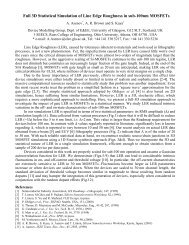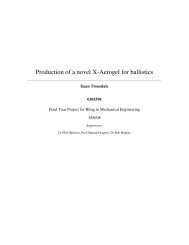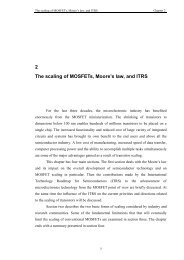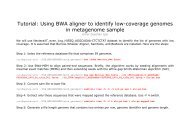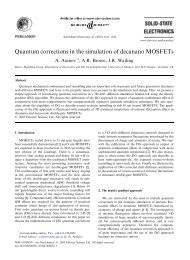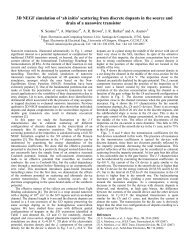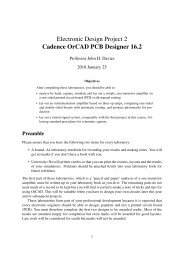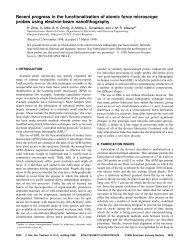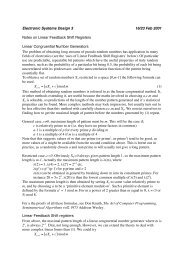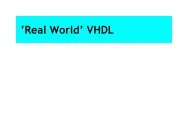Plastic model with non-local damage applied to concrete
Plastic model with non-local damage applied to concrete
Plastic model with non-local damage applied to concrete
You also want an ePaper? Increase the reach of your titles
YUMPU automatically turns print PDFs into web optimized ePapers that Google loves.
80P. GRASSL AND M. JIRÁSEKFigure 7. Increments of the plastic hardening variable at four stages of analysis on the fine mesh for the<strong>non</strong>-<strong>local</strong> <strong>damage</strong>-plastic <strong>model</strong> <strong>with</strong> H p ¼ 0:01; m ¼ 1 and R ¼ 0:1 m:preceding example. The plastic zone decreases but does not fully <strong>local</strong>ize. Instead, it converges<strong>to</strong> a constant width, larger than the element size. This response is in agreement <strong>with</strong> the resultsshown in Figure 6, where the difference between the critical plastic hardening modulus and theactual plastic hardening modulus decreases and then remains constant. Thus, for analysis <strong>with</strong>m ¼ 1 the final size of the <strong>local</strong>ized plastic zone is controlled by the interaction radius R and bythe difference H p H crit;p :6. CONCRETE PLASTICITY COMBINED WITH NON-LOCAL SCALAR DAMAGEIn the last two examples we use a triaxial plasticity <strong>model</strong> <strong>with</strong> <strong>non</strong>-<strong>local</strong> scalar <strong>damage</strong> insimulations of tensile and compressive failure of <strong>concrete</strong>. This regularized formulation is a <strong>non</strong><strong>local</strong>extension of the <strong>damage</strong>-plastic <strong>model</strong> developed by the authors [24], which is brieflyreviewed in the following.The plastic part of the <strong>model</strong> consists of a three-invariant yield condition, <strong>non</strong>-associated flowrule and pressure-dependent hardening. The yield surface, depicted in Figures 8 and 9, is basedon the Menétrey–Willam failure criterion [35], which depends on all three stress invariants(volumetric effective stress %s V ; norm of devia<strong>to</strong>ric effective stress %r and Lode angle y). Themeridians are parabolic and the devia<strong>to</strong>ric sections change from almost triangular shapes at lowconfinement <strong>to</strong> circular shapes at high confinement. The yield surface limits the stress inhydrostatic compression during hardening, which allows <strong>model</strong>ling of compaction under highlyconfined compression. The initial and intermediate yield surfaces have two vertices on thehydrostatic axis but the ultimate yield surface has only one vertex on the tensile part of thehydrostatic axis.The flow rule is <strong>non</strong>-associated, which is important for realistic <strong>model</strong>ling of the volumetricexpansion under low-confined compression. An associated flow rule for this type of yield surfacegives an unrealistically high volumetric expansion in compression. In the case of passiveconfinement, overestimation of the lateral expansion leads <strong>to</strong> an overestimated strength (peakstress), as shown by Grassl [36].Copyright # 2005 John Wiley & Sons, Ltd. Int. J. Numer. Anal. Meth. Geomech. 2006; 30:71–90



